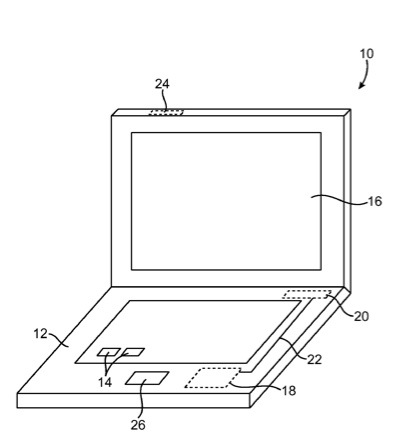Two new Apple patents have appeared at the U.S. Patent & Trademark Office that show Apple is working on different antenna ideas.
Patent number 8223082 involves slot antennas for electronic devices. The slot antennas may have a dielectric-filled slot that is formed in a ground plane element. The ground plane element may be formed from part of a conductive device housing. The slot may have one or more holes at its ends.
The holes may affect the impedance characteristics of the slot antennas so that the length of the slot antennas may be reduced. For example, the holes can be used to synthesize the impedance of the slot antennas so that the slot antennas have a resonant frequency that is different from their natural resonant frequency.
The holes may affect the impedance of the slot antennas in multiple radio-frequency bands. The inventors are Bing Chiang, Douglas B. Kough and Enrique Ayala Vazquez.
Patent number 8223077 is for a multisector plate antenna for electronic devices. Per the patent, electronic device antennas with multiple parallel plate sectors are provided for handling multiple-input-multiple-output wireless communications. Each antenna sector in a multisector parallel plate antenna may have upper and lower parallel plates with curved outer edges and a straight inner edge.
A vertical rear wall may be used to connect the upper and lower parallel plates in each antenna sector along the straight inner edge. Each antenna sector may have an antenna probe. The antenna probe may be formed from a monopole antenna loaded with a planar patch. The planar loading patch may be provided in the form of a conductive disk that is connected to the end of a conductive antenna feed member.
The conductive member may be coupled to the center conductor of a transmission line that is used to convey radio-frequency signals between the antenna probe and radio-frequency transceiver circuitry. The antenna sectors may have interplate dielectric structures. The inventors are Bing Chiang, Gregory A. Springer and Douglas B. Kough.



